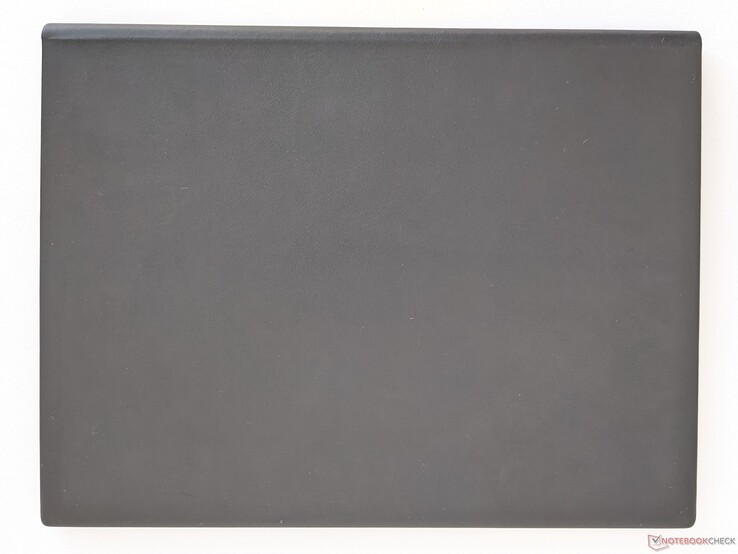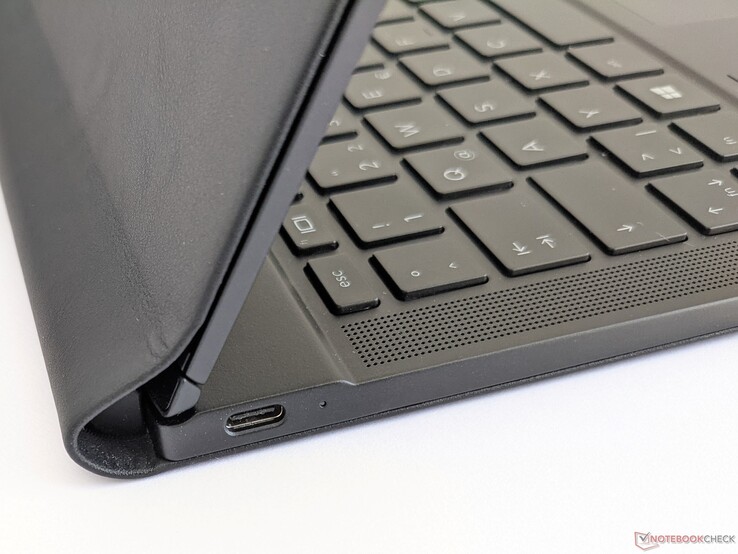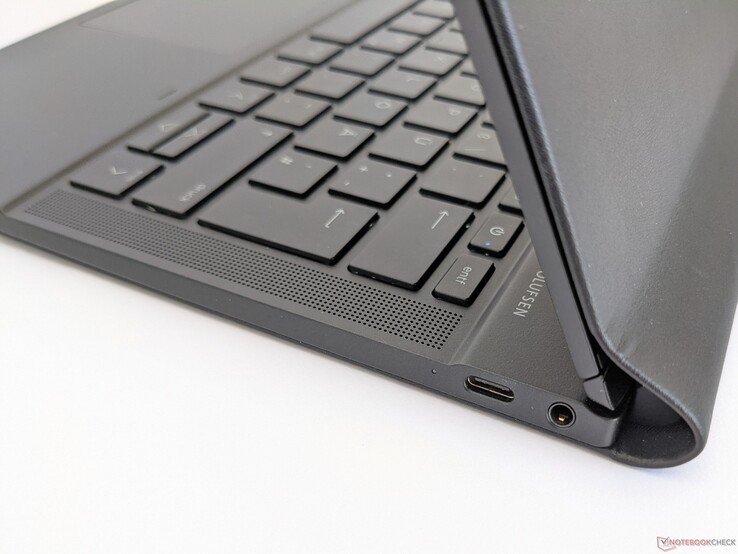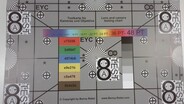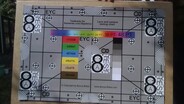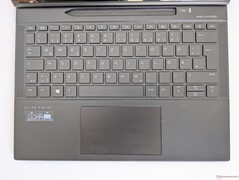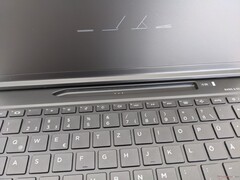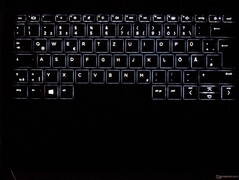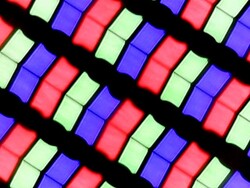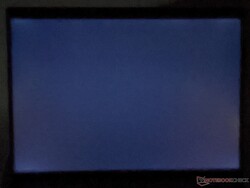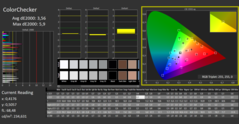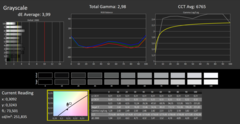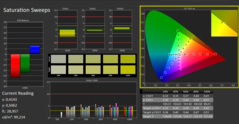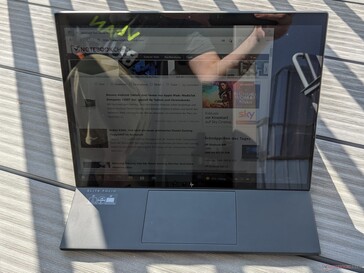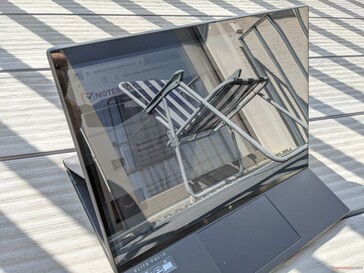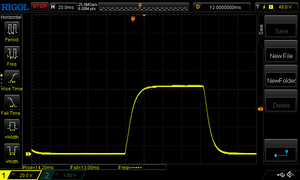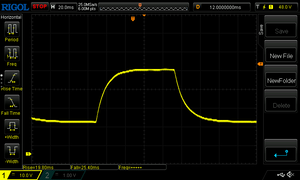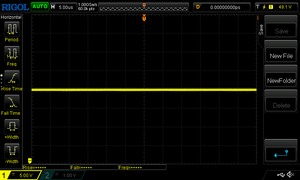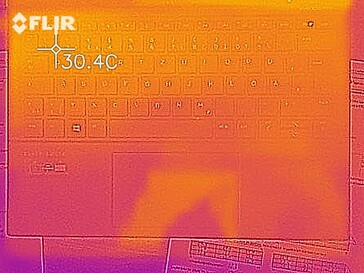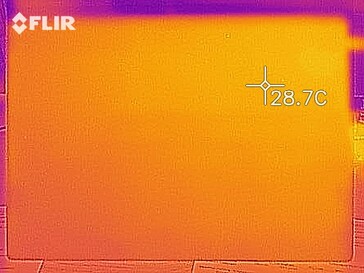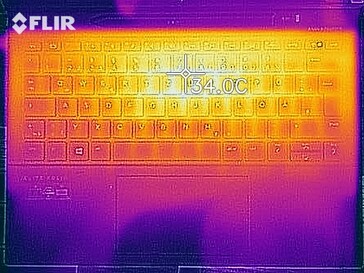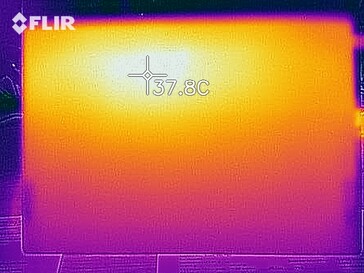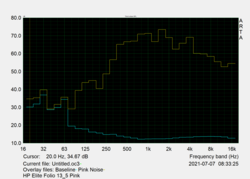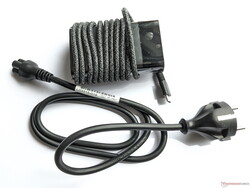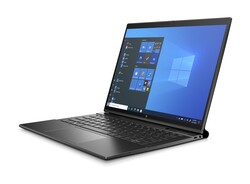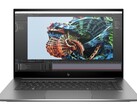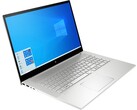HP EliteBook Folio 13.5 in review: Elegant convertible with a highly reflective display
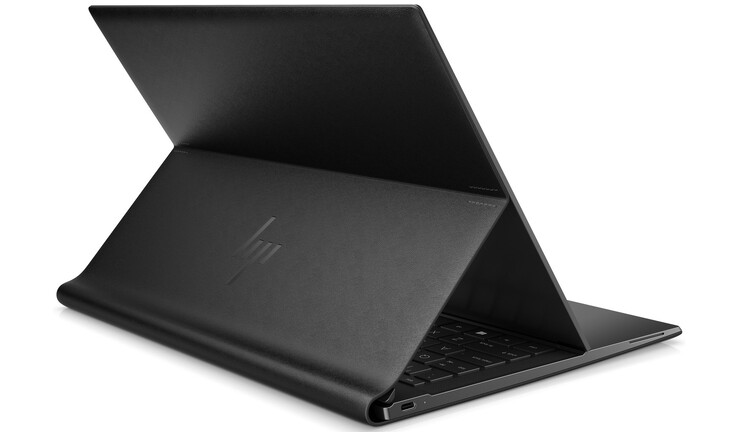
With devices like the EliteBook Dragonfly Max, the Elite Dragonfly, or the EliteBook x360 1040 G7, HP has several more expensive convertibles in its lineup. This range is now expanded by the HP EliteBook Folio 13.5, which has the particularity of using an ARM processor. Besides the Qualcomm Snapdragon 8cx Gen 2, the configuration in review has 16 GB of RAM and a 512 GB SSD. The integrated Qualcomm Adreno 680 is responsible for displaying image content.
There are also other high-quality convertibles available for the price of approximately 2,600 Euros (~$3,052), and we'll use the selection below for comparison purposes in this review. However, since these are equipped with x86 CPUs, we'll also include the Samsung Galaxy Book S, which is equipped with the predecessor SoC of the Snapdragon 8cx Gen 2 installed in the EliteBook Folio 13.5.
Further devices from our database can also be added under each section.
Possible contenders in comparison
Rating | Date | Model | Weight | Height | Size | Resolution | Best Price |
|---|---|---|---|---|---|---|---|
| 84 % | 08/2021 | HP EliteBook Folio 13.5-3G2L2EA SD 8cx Gen 2 5G, Adreno 680 | 1.3 kg | 16 mm | 13.50" | 1920x1280 | |
| 86.2 % | 06/2020 | Samsung Galaxy Book S SD 8cx, Adreno 680 | 951 g | 11.8 mm | 13.30" | 1920x1080 | |
| 86.9 % | 06/2020 | Microsoft Surface Book 3 13.5 i7-1065G7, GeForce GTX 1650 Max-Q | 1.6 kg | 23 mm | 13.50" | 3000x2000 | |
| 87.7 % | 06/2021 | Dell Latitude 13 7320 Detachable, i7-1180G7 i7-1180G7, Iris Xe G7 96EUs | 782 g | 8.44 mm | 13.00" | 1920x1280 | |
| 88.5 % | 04/2021 | Lenovo ThinkPad X12 20UVS03G00 i7-1160G7, Iris Xe G7 96EUs | 1.1 kg | 14.5 mm | 12.30" | 1920x1280 |
Case - Convertible with faux leather cover
HP has made the case of the EliteBook Folio 13.5 from a high-quality imitation leather and, according to the company, from 90% recycled aluminum. This makes the outer surfaces feel a bit soft, while the display, which is protected by Corning Gorilla Glass 5, and the base unit dominate on the inside.
In laptop mode, the maximum opening angle of the Folio 13.5 is around 140 degrees. However, the screen can also be moved forward, so that it's positioned directly behind the ClickPad. The third option is tablet mode, where the back of the screen rests on the keyboard.
With a weight of 1.3 kg, HP's convertible is one of the heaviest devices in our test field. Only the Surface Book 3 13.5 from Microsoft is heavier. Compared to the latter, the Folio 13.5 isn't quite as wide, and it's also much slimmer, but it has a similar depth.
Connectivity - Only USB-C ports
The HP EliteBook Folio 13.5's connectivity is very modest. Apart from the two USB-C ports and the headset port, there are no other interfaces. Furthermore, one of the two USB ports is blocked by the power adapter when it's connected.
Nevertheless, the DisplayPort 1.4 and Power Delivery support enables the use of additional interfaces when the corresponding adapters or docking stations are attached.
Communication
The Qualcomm Snapdragon 8cx Gen 2 chip integrates Wi-Fi 6, Bluetooth 5.0, and 5G as wireless connectivity options. Instead of the latter, however, mobile connections are only available via LTE in the EliteBook Folio 13.5. With LTE Cat 20, download rates of up to 2,000 Mb/s and upload speeds of up to 300 Mb/s are possible in theory. The SIM card slot is integrated into the stylus compartment.
Once again, the wireless connection with our Netgear test router is expectedly weak, and this didn't improve in any of the multiple subsequent test runs. The Folio lags behind all contenders here.
Webcam
HP uses a webcam with a resolution of only 0.9 MP, which is common in most current devices. The image quality is correspondingly low as can be seen in our sample pictures.
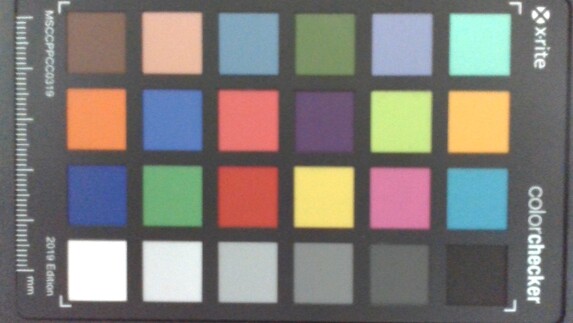
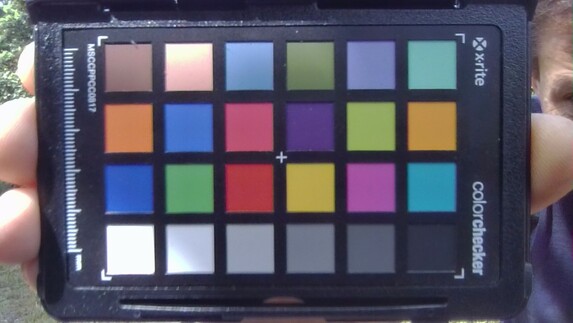
Accessories
The EliteBook Folio 13.5 comes with the convertible itself, a 65-watt power adapter, and a stylus. Carrying cases and various docking stations can be purchased separately from the manufacturer.
Warranty
HP provides a 12-month warranty period for the EliteBook Folio 13.5.
Maintenance
The HP EliteBook Folio 13.5 lacks standard maintenance options. However, as shown in the embedded video from HP, the interior can be accessed with the right knowledge, and the SSD can be replaced here, for example.
Input devices - No stylus included in the box
Keyboard
The Folio 13.5's keyboard offers clear feedback and is well suited for typing longer text. A two-stage backlight ensures that the characters are easy to identify even in low-light conditions. The up and down arrow keys are slightly smaller, which makes using them more difficult.
Touchpad
HP uses a ClickPad as mouse replacement; it's well-suited for navigating the mouse pointer, and it responds reliably both to touch as well as to click inputs. The touchscreen also responds reliably and immediately to touches. It's also less susceptible to fingerprints and can also be used for drag-and-drop motions.
Although there's a slot for a compatible stylus from HP, it wasn't available to us for this review.
Display - HP convertible is highly reflective
The display of the HP EliteBook Folio 13.5 consists of a 13.5-inch IPS panel in the 3:2 format that offers a resolution of 1920x1280 pixels. The maximum brightness of 250 cd/m² on average is comparatively low, and the brightness distribution of 82% is also below the values of our test field.
HP specifies a brightness of 400 cd/m², but we weren't able to achieve this. No PWM is used for brightness control, which benefits users with sensitive eyes. No other display variants are offered.
| |||||||||||||||||||||||||
Brightness Distribution: 82 %
Center on Battery: 252 cd/m²
Contrast: 1163:1 (Black: 0.215 cd/m²)
ΔE Color 3.59 | 0.5-29.43 Ø5
ΔE Greyscale 3.99 | 0.57-98 Ø5.3
Gamma: 2.98
| HP EliteBook Folio 13.5-3G2L2EA LGD0663, IPS, 1920x1280, 13.50 | Samsung Galaxy Book S BOE, IPS, 1920x1080, 13.30 | Microsoft Surface Book 3 13.5 Panasonic MEI96A2, IPS, 3000x2000, 13.50 | Dell Latitude 13 7320 Detachable, i7-1180G7 Sharp LQ130N1, IPS, 1920x1280, 13.00 | Lenovo ThinkPad X12 20UVS03G00 N123NCA-GS1, a-Si IPS LED, 1920x1280, 12.30 | |
|---|---|---|---|---|---|
| Display | |||||
| Display P3 Coverage | 63.5 | 79.5 | 67 | ||
| sRGB Coverage | 95.1 | 100 | 99.2 | ||
| AdobeRGB 1998 Coverage | 65.7 | 78.4 | 68.8 | ||
| Response Times | -8% | -36% | -21% | -39% | |
| Response Time Grey 50% / Grey 80% * | 44 ? | 48.8 ? -11% | 57 ? -30% | 53.2 ? -21% | 63.2 ? -44% |
| Response Time Black / White * | 27 ? | 28.4 ? -5% | 38 ? -41% | 32.8 ? -21% | 36 ? -33% |
| PWM Frequency | 9524 ? | 2451 ? | |||
| Screen | 9% | 32% | 25% | 51% | |
| Brightness middle | 250 | 383 53% | 391 56% | 521.8 109% | 419 68% |
| Brightness | 226 | 355 57% | 367 62% | 504 123% | 406 80% |
| Brightness Distribution | 82 | 88 7% | 86 5% | 93 13% | 94 15% |
| Black Level * | 0.215 | 0.36 -67% | 0.19 12% | 0.35 -63% | 0.23 -7% |
| Contrast | 1163 | 1064 -9% | 2058 77% | 1491 28% | 1822 57% |
| Colorchecker dE 2000 * | 3.59 | 3.1 14% | 3.07 14% | 3.83 -7% | 1.1 69% |
| Colorchecker dE 2000 max. * | 5.9 | 5.3 10% | 4.74 20% | 5.51 7% | 2.2 63% |
| Greyscale dE 2000 * | 3.99 | 3.6 10% | 3.6 10% | 4.4 -10% | 1.5 62% |
| Gamma | 2.98 74% | 2 110% | 2.29 96% | 2.02 109% | 2.06 107% |
| CCT | 6765 96% | 6743 96% | 6330 103% | 6494 100% | 6524 100% |
| Colorchecker dE 2000 calibrated * | 1.52 | 1.97 | 0.5 | ||
| Color Space (Percent of AdobeRGB 1998) | 61 | 62.8 | |||
| Color Space (Percent of sRGB) | 95 | 99.2 | |||
| Total Average (Program / Settings) | 1% /
6% | -2% /
19% | 2% /
16% | 6% /
33% |
* ... smaller is better
According to our measurements, the Folio 13.5's display shows a good contrast ratio of 1,163:1 and an equally good black level of 0.215 cd/m². The color-space coverage could not be determined due to the incompatible measuring software.
However, the CalMAN analysis shows that colors are already reproduced with a small deviation out of the box. Therefore, performing a calibration is not necessary.
Display Response Times
| ↔ Response Time Black to White | ||
|---|---|---|
| 27 ms ... rise ↗ and fall ↘ combined | ↗ 14 ms rise | |
| ↘ 13 ms fall | ||
| The screen shows relatively slow response rates in our tests and may be too slow for gamers. In comparison, all tested devices range from 0.1 (minimum) to 240 (maximum) ms. » 63 % of all devices are better. This means that the measured response time is worse than the average of all tested devices (21.5 ms). | ||
| ↔ Response Time 50% Grey to 80% Grey | ||
| 44 ms ... rise ↗ and fall ↘ combined | ↗ 19 ms rise | |
| ↘ 25 ms fall | ||
| The screen shows slow response rates in our tests and will be unsatisfactory for gamers. In comparison, all tested devices range from 0.2 (minimum) to 636 (maximum) ms. » 70 % of all devices are better. This means that the measured response time is worse than the average of all tested devices (33.7 ms). | ||
Screen Flickering / PWM (Pulse-Width Modulation)
| Screen flickering / PWM not detected | |||
In comparison: 53 % of all tested devices do not use PWM to dim the display. If PWM was detected, an average of 17900 (minimum: 5 - maximum: 3846000) Hz was measured. | |||
Performance - Sufficient for everyday use
HP orients the EliteBook Folio 13.5 towards the use as an office device and for representative purposes. Our test device's configuration is a bit more powerful due to the increased RAM and storage capacity, but a model with 8 GB of RAM and a 256 GB SSD is also available.
Processor
The EliteBook Folio 13.5 is powered by a Qualcomm Snapdragon 8cx Gen 2, which is an ARM-based SoC like the ones used in current smartphones and tablets. Consequently, you can't run all the applications that are available for Windows, and you should check before buying whether the required x64 applications are also available as versions that can be run on an ARM processor. Nevertheless, most x32 applications should work.
Due to the problems mentioned above, it's not possible to run all the usual benchmarks. Therefore, we will focus on the executable tests for the comparison. These show that the performance of the Folio 13.5 is below comparable devices with Intel CPUs. Graphics performance is also significantly lower and consequently only suitable for simple photo editing and the like.
A comparison with the Samsung Galaxy Book S reveals that the Snapdragon 8cx Gen 2 offers about 10% to 15% higher CPU performance compared to the 8cx in most tests. Only in Geekbench 4.1 does the 8cx perform better.
The Adreno 680's graphics performance increases by over 40% compared to the predecessor, which is considerably higher. Compared with current internal graphics units, such as the Intel Iris Xe Graphics G7 96EUs, its performance is much lower, though.
In our CPU Benchmarks article, the Qualcomm Snapdragon 8cx Gen 2 can be compared with other processors. The Adreno 680's graphics performance can be compared with other GPUs in our GPU Benchmarks article.
Geekbench 4.4: 64 Bit Single-Core Score | 64 Bit Multi-Core Score
WebXPRT 3: Overall
JetStream 1.1: Total Score
Jetstream 2: Total Score
Mozilla Kraken 1.1: Total
Octane V2: Total Score
3DMark 11: 1280x720 Performance GPU
| Geekbench 5.5 / Single-Core | |
| Average of class Convertible (319 - 1981, n=68, last 2 years) | |
| Dell Latitude 13 7320 Detachable, i7-1180G7 | |
| Lenovo ThinkPad X12 20UVS03G00 | |
| Microsoft Surface Book 3 13.5 | |
| HP EliteBook Folio 13.5-3G2L2EA | |
| Average Qualcomm Snapdragon 8cx Gen 2 5G (793 - 801, n=2) | |
| Samsung Galaxy Book S | |
| Geekbench 5.5 / Multi-Core | |
| Average of class Convertible (663 - 14016, n=68, last 2 years) | |
| Dell Latitude 13 7320 Detachable, i7-1180G7 | |
| Lenovo ThinkPad X12 20UVS03G00 | |
| Microsoft Surface Book 3 13.5 | |
| HP EliteBook Folio 13.5-3G2L2EA | |
| Average Qualcomm Snapdragon 8cx Gen 2 5G (3088 - 3143, n=2) | |
| Samsung Galaxy Book S | |
| Geekbench 4.4 / 64 Bit Single-Core Score | |
| Dell Latitude 13 7320 Detachable, i7-1180G7 | |
| Average of class Convertible (1989 - 6801, n=7, last 2 years) | |
| Samsung Galaxy Book S | |
| HP EliteBook Folio 13.5-3G2L2EA | |
| Average Qualcomm Snapdragon 8cx Gen 2 5G () | |
| Geekbench 4.4 / 64 Bit Multi-Core Score | |
| Average of class Convertible (3462 - 30452, n=7, last 2 years) | |
| Dell Latitude 13 7320 Detachable, i7-1180G7 | |
| Samsung Galaxy Book S | |
| HP EliteBook Folio 13.5-3G2L2EA | |
| Average Qualcomm Snapdragon 8cx Gen 2 5G () | |
| WebXPRT 3 / Overall | |
| Average of class Convertible (84.2 - 366, n=64, last 2 years) | |
| Dell Latitude 13 7320 Detachable, i7-1180G7 | |
| Lenovo ThinkPad X12 20UVS03G00 | |
| Microsoft Surface Book 3 13.5 | |
| HP EliteBook Folio 13.5-3G2L2EA | |
| Average Qualcomm Snapdragon 8cx Gen 2 5G () | |
| Samsung Galaxy Book S | |
| JetStream 1.1 / Total Score | |
| Average of class Convertible (338 - 443, n=4, last 2 years) | |
| Microsoft Surface Book 3 13.5 | |
| HP EliteBook Folio 13.5-3G2L2EA | |
| Average Qualcomm Snapdragon 8cx Gen 2 5G () | |
| Samsung Galaxy Book S | |
| Jetstream 2 / Total Score | |
| Average of class Convertible (157.5 - 435, n=37, last 2 years) | |
| Dell Latitude 13 7320 Detachable, i7-1180G7 | |
| Lenovo ThinkPad X12 20UVS03G00 | |
| HP EliteBook Folio 13.5-3G2L2EA | |
| Average Qualcomm Snapdragon 8cx Gen 2 5G () | |
| Samsung Galaxy Book S | |
| Mozilla Kraken 1.1 / Total | |
| Samsung Galaxy Book S | |
| HP EliteBook Folio 13.5-3G2L2EA | |
| Average Qualcomm Snapdragon 8cx Gen 2 5G () | |
| Microsoft Surface Book 3 13.5 | |
| Lenovo ThinkPad X12 20UVS03G00 | |
| Average of class Convertible (472 - 3989, n=66, last 2 years) | |
| Dell Latitude 13 7320 Detachable, i7-1180G7 | |
| Octane V2 / Total Score | |
| Average of class Convertible (70338 - 92146, n=14, last 2 years) | |
| Lenovo ThinkPad X12 20UVS03G00 | |
| Microsoft Surface Book 3 13.5 | |
| HP EliteBook Folio 13.5-3G2L2EA | |
| Average Qualcomm Snapdragon 8cx Gen 2 5G () | |
| Samsung Galaxy Book S | |
| 3DMark 11 / Performance GPU | |
| Microsoft Surface Book 3 13.5 | |
| Average of class Convertible (471 - 40768, n=66, last 2 years) | |
| Dell Latitude 13 7320 Detachable, i7-1180G7 | |
| Lenovo ThinkPad X12 20UVS03G00 | |
| HP EliteBook Folio 13.5-3G2L2EA | |
| Average Qualcomm Snapdragon 8cx Gen 2 5G () | |
| Samsung Galaxy Book S | |
* ... smaller is better
Storage
HP uses a 512 GB Toshiba/Kioxia XG6 SSD in the Folio 13.5. It achieves good read and write rates in the storage benchmarks, which lie at the bottom of our test field. Only the SSD in the Samsung Galaxy Book S shows a lower result.
Our HDD/SSD Benchmarks article shows how other mass storage devices perform in comparison.
| HP EliteBook Folio 13.5-3G2L2EA Toshiba XG6 KXG60ZNV512G | Samsung Galaxy Book S 256 GB NVMe | Microsoft Surface Book 3 13.5 SK Hynix BC501 HFM512GDJTNG | Dell Latitude 13 7320 Detachable, i7-1180G7 WDC PC SN530 SDBPMPZ-265G | Lenovo ThinkPad X12 20UVS03G00 Toshiba BG4 KBG40ZNT512G | Average Toshiba XG6 KXG60ZNV512G | |
|---|---|---|---|---|---|---|
| CrystalDiskMark 5.2 / 6 | -3% | 200% | 332% | 181% | 313% | |
| Write 4K | 21.61 | 30.59 42% | 88.4 309% | 177.5 721% | 72.8 237% | 112.8 ? 422% |
| Read 4K | 16.77 | 20.26 21% | 39.53 136% | 47.45 183% | 26.35 57% | 42.7 ? 155% |
| Write Seq | 750 | 421.4 -44% | 691 -8% | 971 29% | 823 10% | 1489 ? 99% |
| Read Seq | 899 | 1232 37% | 1032 15% | 1544 72% | 1169 30% | 1771 ? 97% |
| Write 4K Q32T1 | 63.1 | 39.17 -38% | 279.6 343% | 295.3 368% | 112.6 78% | 345 ? 447% |
| Read 4K Q32T1 | 30.94 | 41.14 33% | 261.6 746% | 394.1 1174% | 327.2 958% | 359 ? 1060% |
| Write Seq Q32T1 | 1742 | 420.9 -76% | 868 -50% | 977 -44% | 1039 -40% | 2257 ? 30% |
| Read Seq Q32T1 | 998 | 1047 5% | 2075 108% | 2482 149% | 2176 118% | 2926 ? 193% |
| AS SSD | -40% | 27% | -10% | -0% | 78% | |
| Seq Read | 2376 | 1069 -55% | 1707 -28% | 1918 -19% | 1760 -26% | 2456 ? 3% |
| Seq Write | 881 | 382 -57% | 510 -42% | 357.6 -59% | 761 -14% | 1493 ? 69% |
| 4K Read | 25.86 | 16.64 -36% | 38.77 50% | 38.97 51% | 47.68 84% | 44.1 ? 71% |
| 4K Write | 55.6 | 35.99 -35% | 100.9 81% | 195.5 252% | 176 217% | 119.3 ? 115% |
| 4K-64 Read | 453.2 | 415.1 -8% | 630 39% | 390.9 -14% | 581 28% | 980 ? 116% |
| 4K-64 Write | 529 | 229.5 -57% | 707 34% | 103.9 -80% | 118.5 -78% | 1180 ? 123% |
| Access Time Read * | 0.148 | 0.085 43% | 0.122 18% | 0.155 -5% | 0.08057 ? 46% | |
| Access Time Write * | 0.07 | 0.093 -33% | 0.035 50% | 0.189 -170% | 0.188 -169% | 0.055 ? 21% |
| Score Read | 717 | 539 -25% | 839 17% | 622 -13% | 805 12% | 1269 ? 77% |
| Score Write | 672 | 304 -55% | 859 28% | 335 -50% | 371 -45% | 1449 ? 116% |
| Score Total | 1685 | 1086 -36% | 2077 23% | 1209 -28% | 1551 -8% | 3326 ? 97% |
| Total Average (Program / Settings) | -22% /
-23% | 114% /
100% | 161% /
134% | 91% /
76% | 196% /
177% |
* ... smaller is better
Gaming performance
The performance of the internal Qualcomm Adreno 680 is only suitable for very simple games from the Windows Store. Other games, even older titles with lower graphics performance requirements, can only be run to a very limited extent or not at all.
Emissions - Silent Windows convertible
Noise emissions
The EliteBook Folio 13.5 is cooled passively and is consequently silent. We weren't able to detect other noises, such as coil whine or the like, in our test model.
Temperature
According to our measurements, the surfaces of the Folio 13.5 heat up to 35.4 °C (~96 °F) under load. As a result, the device only feels a bit warm, but it never gets hot. The palm rest temperatures always remain moderate, which allows the Windows convertible to be used at all times.
(+) The maximum temperature on the upper side is 34.3 °C / 94 F, compared to the average of 35.3 °C / 96 F, ranging from 19.6 to 55.7 °C for the class Convertible.
(+) The bottom heats up to a maximum of 35.4 °C / 96 F, compared to the average of 36.7 °C / 98 F
(+) In idle usage, the average temperature for the upper side is 23.8 °C / 75 F, compared to the device average of 30.2 °C / 86 F.
(+) The palmrests and touchpad are cooler than skin temperature with a maximum of 27.3 °C / 81.1 F and are therefore cool to the touch.
(±) The average temperature of the palmrest area of similar devices was 28.1 °C / 82.6 F (+0.8 °C / 1.5 F).
Speakers
HP EliteBook Folio 13.5-3G2L2EA audio analysis
(-) | not very loud speakers (71.2 dB)
Bass 100 - 315 Hz
(±) | reduced bass - on average 14.5% lower than median
(±) | linearity of bass is average (13.1% delta to prev. frequency)
Mids 400 - 2000 Hz
(±) | higher mids - on average 8.6% higher than median
(±) | linearity of mids is average (8.1% delta to prev. frequency)
Highs 2 - 16 kHz
(+) | balanced highs - only 3.4% away from median
(±) | linearity of highs is average (8.2% delta to prev. frequency)
Overall 100 - 16.000 Hz
(±) | linearity of overall sound is average (19.5% difference to median)
Compared to same class
» 42% of all tested devices in this class were better, 7% similar, 51% worse
» The best had a delta of 6%, average was 21%, worst was 57%
Compared to all devices tested
» 43% of all tested devices were better, 7% similar, 50% worse
» The best had a delta of 4%, average was 25%, worst was 134%
Lenovo ThinkPad X12 20UVS03G00 audio analysis
(±) | speaker loudness is average but good (75.1 dB)
Bass 100 - 315 Hz
(-) | nearly no bass - on average 22.5% lower than median
(±) | linearity of bass is average (11.3% delta to prev. frequency)
Mids 400 - 2000 Hz
(±) | higher mids - on average 6.8% higher than median
(+) | mids are linear (6.6% delta to prev. frequency)
Highs 2 - 16 kHz
(+) | balanced highs - only 3.4% away from median
(+) | highs are linear (6.2% delta to prev. frequency)
Overall 100 - 16.000 Hz
(±) | linearity of overall sound is average (24% difference to median)
Compared to same class
» 70% of all tested devices in this class were better, 5% similar, 25% worse
» The best had a delta of 6%, average was 21%, worst was 57%
Compared to all devices tested
» 68% of all tested devices were better, 7% similar, 25% worse
» The best had a delta of 4%, average was 25%, worst was 134%
Energy management - Extreme battery life with Windows on ARM
Energy consumption
The HP EliteBook Folio 13.5 is a very frugal device with an average power consumption of 3.5 watts in idle operation and a maximum of 25 watts under load. Compared with the rest of our test field, only the Samsung Galaxy Book S is more frugal.
The included charger offers an output power of 65 watts, which is a sufficiently high capacity.
| Off / Standby | |
| Idle | |
| Load |
|
| HP EliteBook Folio 13.5-3G2L2EA SD 8cx Gen 2 5G, Adreno 680, Toshiba XG6 KXG60ZNV512G, IPS, 1920x1280, 13.50 | Samsung Galaxy Book S SD 8cx, Adreno 680, 256 GB NVMe, IPS, 1920x1080, 13.30 | Microsoft Surface Book 3 13.5 i7-1065G7, GeForce GTX 1650 Max-Q, SK Hynix BC501 HFM512GDJTNG, IPS, 3000x2000, 13.50 | Dell Latitude 13 7320 Detachable, i7-1180G7 i7-1180G7, Iris Xe G7 96EUs, WDC PC SN530 SDBPMPZ-265G, IPS, 1920x1280, 13.00 | Lenovo ThinkPad X12 20UVS03G00 i7-1160G7, Iris Xe G7 96EUs, Toshiba BG4 KBG40ZNT512G, a-Si IPS LED, 1920x1280, 12.30 | Average Qualcomm Adreno 680 | Average of class Convertible | |
|---|---|---|---|---|---|---|---|
| Power Consumption | 10% | -215% | -67% | -90% | 5% | -155% | |
| Idle Minimum * | 2.3 | 1.61 30% | 4.8 -109% | 2.5 -9% | 4 -74% | 1.955 ? 15% | 5.44 ? -137% |
| Idle Average * | 3.7 | 4.3 -16% | 9.4 -154% | 4.8 -30% | 5.9 -59% | 4 ? -8% | 8.27 ? -124% |
| Idle Maximum * | 5.6 | 5 11% | 11.2 -100% | 6 -7% | 8.3 -48% | 5.3 ? 5% | 10.8 ? -93% |
| Load Average * | 13 | 13.2 -2% | 72 -454% | 31.9 -145% | 30.1 -132% | 13.1 ? -1% | 46.7 ? -259% |
| Load Maximum * | 25 | 18.3 27% | 90 -260% | 61 -144% | 59 -136% | 21.7 ? 13% | 65.4 ? -162% |
| Witcher 3 ultra * | 26.2 | 30.8 |
* ... smaller is better
Battery life
The EliteBook Folio 13.5 achieves a runtime of 14:34 hours in our real-world Wi-Fi test. This is significantly longer than comparable devices with Intel CPUs and is only surpassed by the Samsung Galaxy Book S.
HP's convertible supports fast charging, which means that 90% of the 46 Wh battery's charge is available again after 90 minutes.
| HP EliteBook Folio 13.5-3G2L2EA SD 8cx Gen 2 5G, Adreno 680, 46 Wh | Samsung Galaxy Book S SD 8cx, Adreno 680, 42 Wh | Microsoft Surface Book 3 13.5 i7-1065G7, GeForce GTX 1650 Max-Q, 69 Wh | Dell Latitude 13 7320 Detachable, i7-1180G7 i7-1180G7, Iris Xe G7 96EUs, 40 Wh | Lenovo ThinkPad X12 20UVS03G00 i7-1160G7, Iris Xe G7 96EUs, 42 Wh | Average of class Convertible | |
|---|---|---|---|---|---|---|
| Battery Runtime | 28% | -40% | -37% | -49% | -44% | |
| WiFi v1.3 | 874 | 953 9% | 396 -55% | 661 -24% | 492 -44% | 567 ? -35% |
| Load | 251 | 369 47% | 188 -25% | 126 -50% | 119 -53% | 121.7 ? -52% |
Pros
Cons
Verdict - Low performance but long battery life
The advantages of a Windows-on-ARM device are clearly the frugal operation and the resulting long battery life. The HP EliteBook Folio 13.5 can be operated for a very long time of over 14 hours on Wi-Fi, and it has a high-quality build. The input devices are very good as well. We would have appreciated that there's an extra storage slot for the stylus, had it been included in the package in the first place.
The HP EliteBook Folio 13.5 convinces above all with its high-quality case and long battery life. However, we would have liked the included accessories to be more generous.
If we look at the system performance, the EliteBook Folio 13.5 can handle office applications, Internet usage, and possibly even minor image-editing tasks without issues. The system runs smoothly and responds immediately to inputs. Compared with similarly priced Intel convertibles, however, the available performance is clearly inferior to what these devices offer with their x64 CPUs. Nevertheless, the latter only achieve about half of the EliteBook Folio 13.5's battery runtimes.
If more performance is required, devices like the Microsoft Surface Book 3 13.5 or the Dell Latitude 13 7320 are recommended. If the longest possible battery life is preferred, though, and all the necessary applications can also be run on an ARM processor, the EliteBook Folio 13.5 is a good choice.
Price and availability
You can find the EliteBook Folio 13.5 in the manufacturer's online store starting at around $1,500 for the base configuration (128 GB of storage, 8 GB of RAM, 300-nit display, no LTE). You can also customize the device extensively here and max out the storage space, RAM, and the display brightness, as well as add LTE connectivity.
Alternatively, there are also a couple of listings of the device on Amazon and newegg, for example.
HP EliteBook Folio 13.5-3G2L2EA
-
08/09/2021 v7
Mike Wobker


 Deutsch
Deutsch English
English Español
Español Français
Français Italiano
Italiano Nederlands
Nederlands Polski
Polski Português
Português Русский
Русский Türkçe
Türkçe Svenska
Svenska Chinese
Chinese Magyar
Magyar